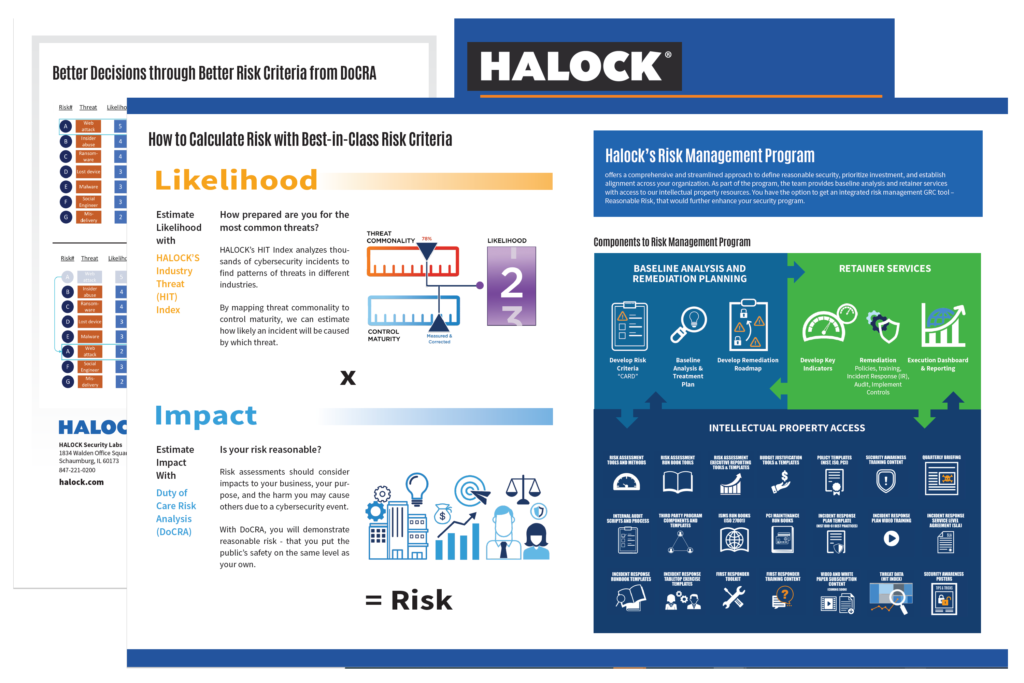Risk Management Program
Reach and Maintain Acceptable Risk
Risk Manage Your Security with Confidence
Risk management is not a one-time event—it’s a continuous process. Cyber threats don’t operate on a schedule, and risk can shift from manageable to critical in the blink of an eye. Whether you’re facing routine business operations or a sudden cybersecurity breach, your ability to manage your organization’s risk effectively can determine the long-term health of your organization.
But how do you risk manage a complex environment where stakeholders have conflicting priorities?
Introducing Duty of Care Risk Analysis (DoCRA)
HALOCK’s Risk Management Program, grounded in the principles of DoCRA, provides a balanced and defensible way to manage cyber risk. DoCRA (Duty of Care Risk Analysis) is a standards-based methodology that helps organizations assess and justify their cybersecurity controls in a way that is legally defensible, ethically sound, and operationally practical.
With DoCRA, your organization can:
Prioritize security investments based on business impact
Align controls with compliance mandates (HIPAA, PCI DSS, CCPA, etc.)
Address the needs of all stakeholders—from executives and legal teams to customers and regulators
Justify that your risk decisions are reasonable and acceptable
Avoid over- or under-securing your environment
Strengthen your position for cyber insurance eligibility and claims
Demonstrate ongoing risk management to auditors and board members
Reasonable Risk Management in Action
HALOCK’s Risk Management Program applies DoCRA to help you identify your most critical threats and implement safeguards that do not create greater harm than the threats themselves. The goal? Achieve “reasonable security”—a legal and practical threshold that meets regulatory expectations and protects your organization from unnecessary liability.
This means:
Balancing risk mitigation with business objectives
Applying controls that are appropriate to the harm they are meant to prevent
Managing cyber risk as a strategic asset—not just a technical task
Protect What Matters Without Overburdening Your Organization
Risk is inevitable, but how you “risk manage it” is what defines your resilience. Implement a risk strategy that supports your mission, fulfills your duty of care, and strengthens trust with customers, partners, and regulators.
Learn more about how DoCRA applies to your compliance requirements such as HIPAA, PCI DSS, Privacy and help you reach and maintain acceptable risk and reasonable security.
CONTACT US – Start managing your risk with purpose today.

